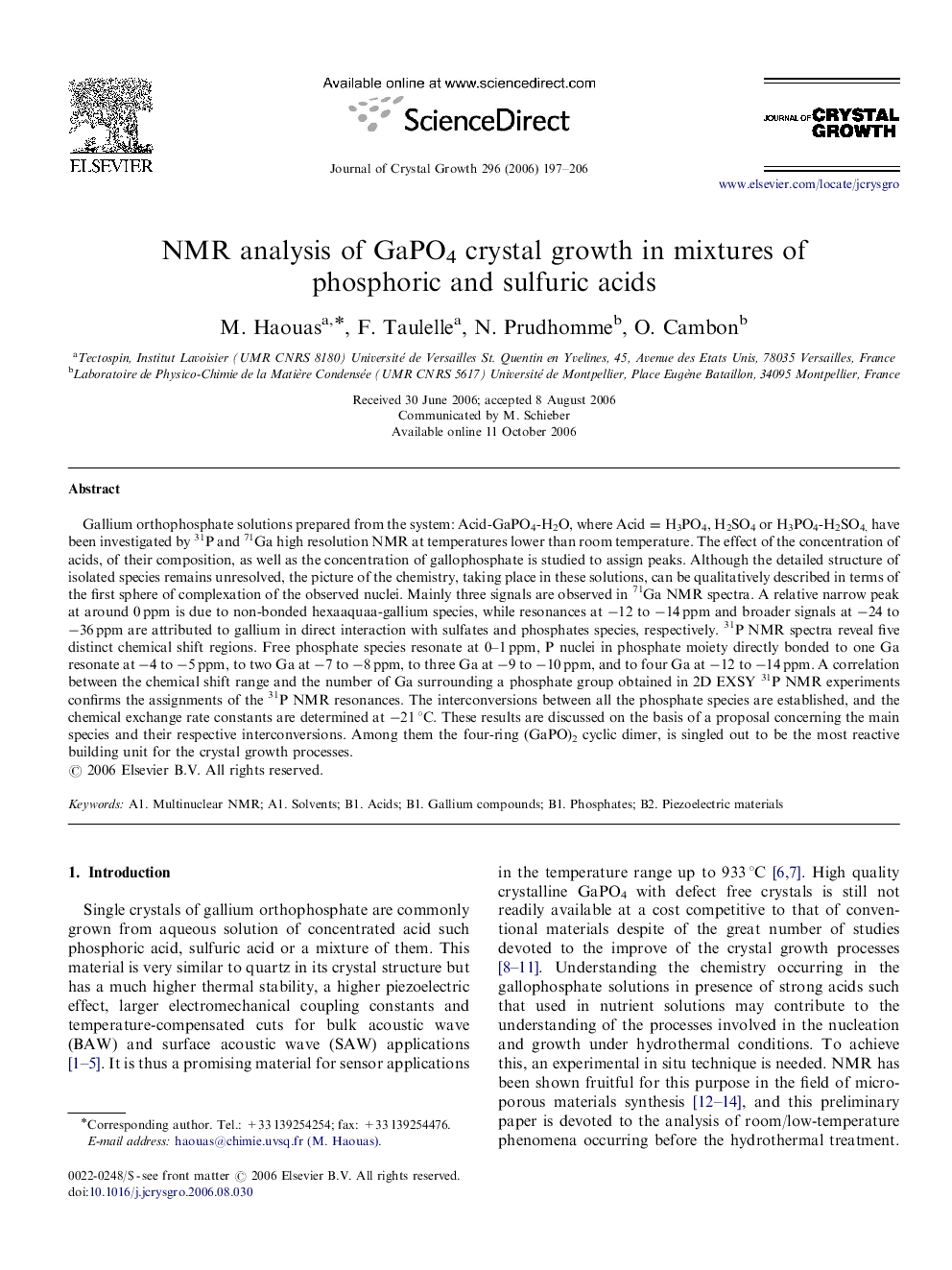| Article ID | Journal | Published Year | Pages | File Type |
|---|---|---|---|---|
| 1796345 | Journal of Crystal Growth | 2006 | 10 Pages |
Gallium orthophosphate solutions prepared from the system: Acid-GaPO4-H2O, where Acid=H3PO4, H2SO4 or H3PO4-H2SO4, have been investigated by 31P and 71Ga high resolution NMR at temperatures lower than room temperature. The effect of the concentration of acids, of their composition, as well as the concentration of gallophosphate is studied to assign peaks. Although the detailed structure of isolated species remains unresolved, the picture of the chemistry, taking place in these solutions, can be qualitatively described in terms of the first sphere of complexation of the observed nuclei. Mainly three signals are observed in 71Ga NMR spectra. A relative narrow peak at around 0 ppm is due to non-bonded hexaaquaa-gallium species, while resonances at −12 to −14 ppm and broader signals at −24 to −36 ppm are attributed to gallium in direct interaction with sulfates and phosphates species, respectively. 31P NMR spectra reveal five distinct chemical shift regions. Free phosphate species resonate at 0–1 ppm, P nuclei in phosphate moiety directly bonded to one Ga resonate at −4 to −5 ppm, to two Ga at −7 to −8 ppm, to three Ga at −9 to −10 ppm, and to four Ga at −12 to −14 ppm. A correlation between the chemical shift range and the number of Ga surrounding a phosphate group obtained in 2D EXSY 31P NMR experiments confirms the assignments of the 31P NMR resonances. The interconversions between all the phosphate species are established, and the chemical exchange rate constants are determined at −21 °C. These results are discussed on the basis of a proposal concerning the main species and their respective interconversions. Among them the four-ring (GaPO)2 cyclic dimer, is singled out to be the most reactive building unit for the crystal growth processes.
